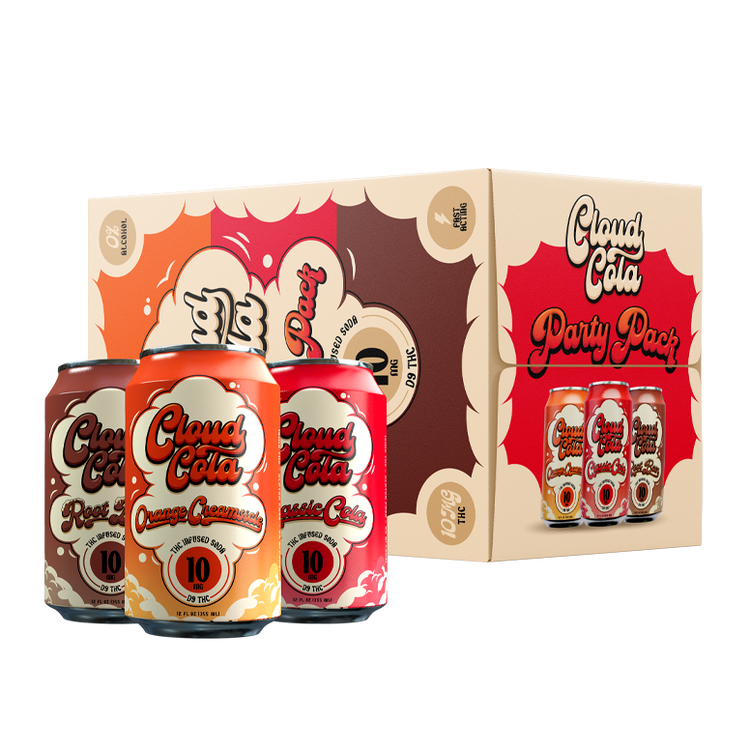How Much THC Is Lost When Smoking?
Factors Affecting THC Loss
Understanding how much THC is lost during smoking is crucial for both recreational and medicinal cannabis users. Several factors can influence the amount of active compound that reaches the bloodstream, impacting the potency and overall effects of the experience.
Combustion Temperature
Combustion temperature plays a significant role in THC loss during smoking. The optimal temperature range for vaporizing THC is between 180°C and 220°C (356°F and 428°F). Below this range, THC may not fully vaporize, leading to incomplete extraction. Conversely, temperatures exceeding 220°C can cause rapid degradation of THC, resulting in significant losses.
Inhalation Technique
Inhalation technique also plays a crucial role in determining how much THC is absorbed. Inhaling deeply and slowly allows for greater surface area exposure, maximizing the amount of vapor that reaches the lungs. Short, shallow puffs tend to result in less efficient absorption as they may not fully fill the lungs with vapor.
Holding the smoke in the lungs for a few seconds before exhaling further enhances THC absorption. This gives more time for the cannabinoids to diffuse into the bloodstream through the delicate lung tissues.
Duration of Smoking
Duration of smoking can also impact how much THC is lost. Prolonged smoking sessions, especially at higher temperatures, can lead to increased degradation and loss of THC.
- Short, infrequent puffs minimize exposure to high temperatures and reduce the risk of excessive THC degradation.
- Long, continuous smoking sessions increase the duration of heat exposure, potentially leading to greater THC loss.
Joint Size and Material
Joint size and material can also influence THC loss. Smaller joints typically burn more evenly and reach a consistent temperature, minimizing variations in THC vaporization. Conversely, larger joints may have areas that burn hotter than others, leading to uneven cannabinoid distribution and potential losses.
The type of rolling paper or material used can also affect THC loss. Thicker papers with higher ash content can trap heat more efficiently, potentially leading to greater degradation of THC. Lighter-weight papers allow for better airflow and more even combustion, which may result in less THC loss.
Estimated THC Loss
Determining the amount of THC lost during smoking is a complex process influenced by various factors. Understanding these variables can help both recreational and medicinal cannabis users optimize their experiences and maximize the therapeutic or psychoactive effects of cannabis.
Range of Loss
Estimating the exact amount of THC lost when smoking is difficult due to the numerous variables involved. However, studies suggest that significant THC loss occurs, with estimates ranging from 20% to 50%.
This range reflects the variability in factors such as combustion temperature, inhalation technique, and smoking duration.
Influence of Factors
Estimating the exact amount of THC lost during smoking is challenging due to the numerous variables involved. However, studies suggest that significant THC loss occurs, with estimates ranging from 20% to 50%. This range reflects the variability in factors such as combustion temperature, inhalation technique, and smoking duration.
Several factors can influence the amount of THC lost when smoking:
- Combustion Temperature: The optimal temperature range for vaporizing THC is between 180°C and 220°C (356°F and 428°F). Below this range, THC may not fully vaporize, leading to incomplete extraction. Conversely, temperatures exceeding 220°C can cause rapid degradation of THC, resulting in significant losses.
- Inhalation Technique: Inhaling deeply and slowly allows for greater surface area exposure, maximizing the amount of vapor that reaches the lungs. Short, shallow puffs tend to result in less efficient absorption as they may not fully fill the lungs with vapor.
- Holding Smoke: Holding the smoke in the lungs for a few seconds before exhaling further enhances THC absorption. This gives more time for the cannabinoids to diffuse into the bloodstream through the delicate lung tissues.
- Duration of Smoking: Prolonged smoking sessions, especially at higher temperatures, can lead to increased degradation and loss of THC.
- Joint Size & Material: Smaller joints typically burn more evenly and reach a consistent temperature, minimizing variations in THC vaporization. Larger joints may have areas that burn hotter than others, leading to uneven cannabinoid distribution and potential losses.
- Rolling Paper Type: Thicker papers with higher ash content can trap heat more efficiently, potentially leading to greater degradation of THC. Lighter-weight papers allow for better airflow and more even combustion, which may result in less THC loss.
Methods for Minimizing THC Loss
Understanding how much THC is lost when smoking is crucial for both recreational and medicinal cannabis users. Several factors can influence the amount of active compound that reaches the bloodstream, impacting the potency and overall effects of the experience.
Low-Temperature Vaporization
Low-temperature vaporization is a method for consuming cannabis that minimizes THC loss compared to combustion methods like smoking.
When cannabis is heated, THC degrades at higher temperatures. Vaporizers allow users to heat cannabis to specific temperatures below the point of combustion, where THC vaporizes without breaking down significantly.
This results in a more efficient extraction of THC and other cannabinoids, potentially leading to a more potent and flavorful experience.
Efficient Inhalation Techniques
Understanding how much THC is lost when smoking is crucial for both recreational and medicinal cannabis users. Several factors can influence the amount of active compound that reaches the bloodstream, impacting the potency and overall effects of the experience.

Combustion temperature plays a significant role in THC loss during smoking. The optimal temperature range for vaporizing THC is between 180°C and 220°C (356°F and 428°F). Below this range, THC may not fully vaporize, leading to incomplete extraction. Conversely, temperatures exceeding 220°C can cause rapid degradation of THC, resulting in significant losses.
Inhalation technique also plays a crucial role in determining how much THC is absorbed. Inhaling deeply and slowly allows for greater surface area exposure, maximizing the amount of vapor that reaches the lungs. Short, shallow puffs tend to result in less efficient absorption as they may not fully fill the lungs with vapor.
Holding the smoke in the lungs for a few seconds before exhaling further enhances THC absorption. This gives more time for the cannabinoids to diffuse into the bloodstream through the delicate lung tissues.
Duration of smoking can also impact how much THC is lost. Prolonged smoking sessions, especially at higher temperatures, can lead to increased degradation and loss of THC.
Joint size and material can also influence THC loss. Smaller joints typically burn more evenly and reach a consistent temperature, minimizing variations in THC vaporization. Conversely, larger joints may have areas that burn hotter than others, leading to uneven cannabinoid distribution and potential losses.
The type of rolling paper or material used can also affect THC loss. Thicker papers with higher ash content can trap heat more efficiently, potentially leading to greater degradation of THC. Lighter-weight papers allow for better airflow and more even combustion, which may result in less THC loss.
Proper Joint Rolling
To minimize THC loss when smoking, it’s crucial to control combustion temperature. The ideal range is between 180°C and 220°C (356°F to 428°F). Below this range, THC may not fully vaporize; above it, rapid degradation occurs.
Proper joint rolling techniques can also help. Smaller joints burn more evenly, preventing hot spots that lead to excess THC loss. Choosing lighter-weight rolling paper allows for better airflow and reduces heat buildup.
When inhaling, aim for deep, slow puffs to maximize the surface area exposed to vapor. Holding the smoke in your lungs for a few seconds before exhaling enhances absorption.
Conclusion
Estimating the exact amount of THC lost during smoking is challenging due to the numerous variables involved. However, studies suggest that significant THC loss occurs, with estimates ranging from 20% to 50%. This range reflects the variability in factors such as combustion temperature, inhalation technique, and smoking duration.
Understanding these factors allows cannabis users to make informed choices about their consumption habits.
By optimizing techniques like maintaining a lower combustion temperature, employing proper inhalation methods, and choosing appropriate joint sizes and rolling papers, individuals can potentially minimize THC loss and maximize the therapeutic or psychoactive effects of cannabis.

Shop Cloud Cola’s top-rated marijuana sodas today
Check out the full version
Read all the way through
- How To Enhance Your Profile With A Nefertiti Neck Lift - August 24, 2025
- How To Be Dominant In The Bedroom Even If You’re Nervous/Unconfident - August 20, 2025
- How Sculptra Enhances Collagen In Aging Skin In Surrey - August 15, 2025
